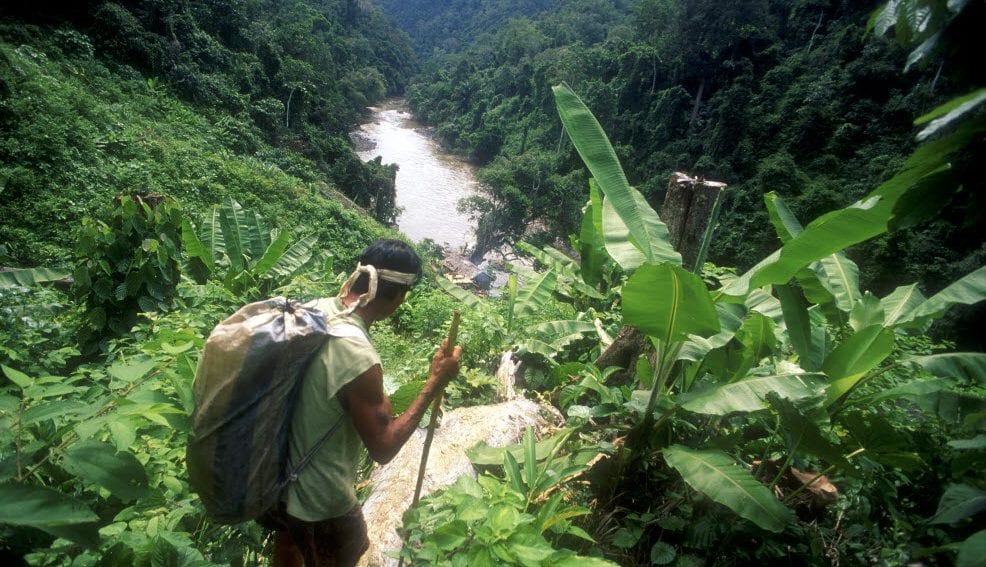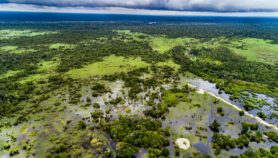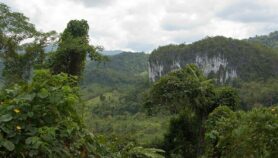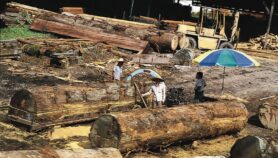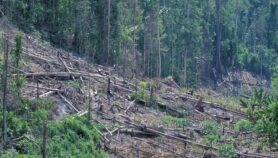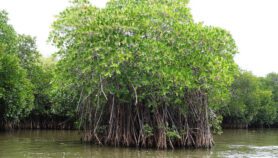Send to a friend
The details you provide on this page will not be used to send unsolicited email, and will not be sold to a 3rd party. See privacy policy.
[JAKARTA] Transnational collaboration for the preservation of Borneo’s endangered forests should involve the whole island and not only one part of it to ensure the best result for conservation.
In a study published in Nature Communications (14 April), researchers showed that whole landscape planning must be done collaboratively by the three nations that share the Asian island to effectively ensure conservation, such as retaining 50 per cent of the island as forests and providing sufficient habitat for the endangered Bornean orangutan and elephant.
Borneo, one of the world’s mega biodiversity hotspots, is under the national governments of Brunei Darussalam, Indonesia and Malaysia. All three are signatories to the Heart of Borneo Initiative which aims to sustainably manage the stretch of rainforest located in the mountainous region of the island.
But Rebecca Runting, the study’s lead author and a PhD candidate from the School of Geography Planning and Environmental Management at the University of Queensland, says the most effective conservation approach for Borneo should not only involve the mountainous region but also the lowlands.
“The Heart of Borneo Initiative doesn’t meet the broader public policy targets because it [only] aims to keep much of the uplands as forests, whereas much of the lowlands, where orangutans and elephants mainly live, could be cleared as these aren’t included,“ notes Runting.
Erik Meijaard, a co-author of the study and founder of the conservation programme Borneo Futures, also tells SciDev.Net that transnational collaboration should include Borneo’s lowland areas as these provide important ecosystem services.
“Lowland forests provide carbon sequestration in coastal peat lands and flood buffering, and the loss of these forests would significantly reduce these service provisions,” says Meijaard.
He says collaborative plans should also encompass land use and natural resource planning: “There are environmental issues that can only be addressed at the Borneo-wide level, such as the relationship between land cover and regional climate, which in turn affect crop yields and other factors. Our study is just a start of exploring what benefits exist in working together.”
“Initiating targeted exploration and discussion of these costs and benefits would be a good starting point. Such discussions could be part of broader negotiations on improving inter-country infrastructure, such as roads and flights, or labour flows as there are many Indonesians working in Malaysian oil palm concessions,” Meijaard points out.
Bambang Hero Suharjo, professor of forest protection at Bogor Agricultural University in Indonesia, also tells SciDev.Net that much of Borneo’s problems lie in the lowlands and should thus be included in the transnational conservation agenda.
Suharjo says the three nations must have strong commitment for this agenda and collaboration must be implemented on the ground because a number of conservation areas in Borneo have been converted to oil palm plantations.
“Many conservation areas are damaged too,” he rues.
>Link to full paper in Nature Communications
This article has been produced by SciDev.Net's South-East Asia & Pacific desk.
References
Nature Communications doi: 10.1038/ncomms7819 (2015)


